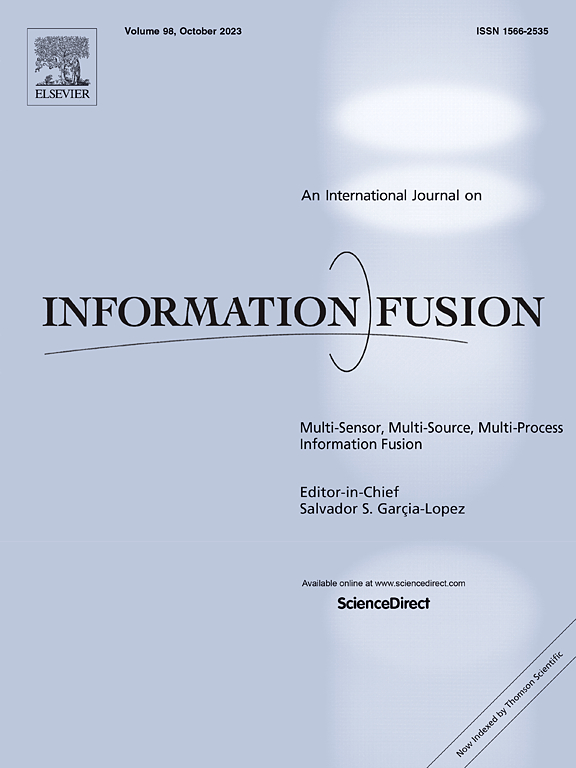基于视触觉传感器的触觉数据生成及应用综述
IF 14.7
1区 计算机科学
Q1 COMPUTER SCIENCE, ARTIFICIAL INTELLIGENCE
引用次数: 0
摘要
触觉是人类重要的感觉系统,提供感知和触觉反馈等能力。由于融合了触觉的多感官信息,人类表现出非凡的环境理解能力和灵巧的操作能力。考虑到触觉感知的重要性,研究人员开发了电容式和压阻式触觉传感器。近年来,视触觉传感器以抽象触觉信息可视化的方式赢得了研究界的青睐。视觉触觉传感器是一种创新的光学传感器,与电子触觉传感器相比,它支持基于图像的高分辨率触觉信息,为在多模态数据集中收集触觉数据集提供了新的方法。然而,由于诸如耐磨性等挑战,收集视觉触觉数据仍然是一项高成本、低效率的任务,这限制了多模态数据集中触觉信息的发展。随着生成方法的发展,视觉触觉数据采集效率低的问题有望得到解决。考虑到触觉数据对多模态数据集的独特贡献,本文将重点介绍视觉-触觉数据的生成。基于仿真方法,视触觉传感器的生成方法可分为两类:(1)基于物理的生成和(2)基于学习的生成。此外,从视觉-触觉数据的角度,综述了融合触觉信息的多模态数据集的前沿应用。在此基础上,讨论了未来面临的挑战和发展方向。本文旨在为该领域的研究人员提供技术指导,并促进包含触觉信息的多模态数据集的广泛开发和应用。本文章由计算机程序翻译,如有差异,请以英文原文为准。
Tactile data generation and applications based on visuo-tactile sensors: A review
Tactile sensation is an essential sensory system in humans, providing abilities such as perception and tactile feedback. Due to multisensory information that integrates tactile sensation, humans exhibit remarkable environmental understanding and dexterous manipulation capabilities. Considering the importance of tactile sensing, researchers have developed tactile sensors such as capacitive and piezoresistive types. In recent years, visuo-tactile sensors have won the favor of the research community with abstract tactile information visualization. The Visuo-tactile sensor is an innovative optical sensor that supports image-based tactile information with high resolution compared to electronic tactile sensors, offering new approaches for tactile dataset collection within multimodal datasets. Nevertheless, owing to challenges such as wear resistance, collecting visuo-tactile data remains a high-cost, low-efficiency task, which limits the development of tactile information in multimodal datasets. With the development of the generation methods, visuo-tactile data collection with low efficiency hopes to be solved. Considering the unique contribution of tactile data to multimodal datasets, this review focuses on visuo-tactile data generation. The generation methods for visuo-tactile sensors are categorized into two categories based on simulation approaches: (1) physics-based and (2) learning-based. Additionally, from the perspective of visuo-tactile data, the review summarizes the cutting-edge applications of multimodal datasets incorporating tactile information. Based on this, the challenges and future directions for development are discussed. This review serves as a technical guide for researchers in the field and aims to promote the widespread development and application of multimodal datasets incorporating tactile information.
求助全文
通过发布文献求助,成功后即可免费获取论文全文。
去求助
来源期刊

Information Fusion
工程技术-计算机:理论方法
CiteScore
33.20
自引率
4.30%
发文量
161
审稿时长
7.9 months
期刊介绍:
Information Fusion serves as a central platform for showcasing advancements in multi-sensor, multi-source, multi-process information fusion, fostering collaboration among diverse disciplines driving its progress. It is the leading outlet for sharing research and development in this field, focusing on architectures, algorithms, and applications. Papers dealing with fundamental theoretical analyses as well as those demonstrating their application to real-world problems will be welcome.
 求助内容:
求助内容: 应助结果提醒方式:
应助结果提醒方式:


